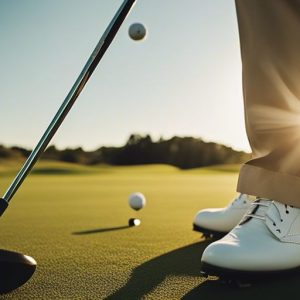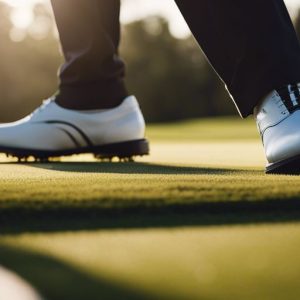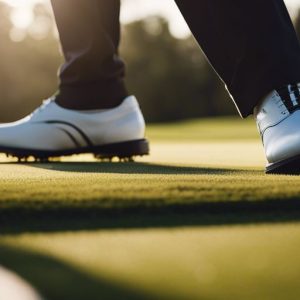Golf balls come in a variety of designs, each tailored to suit different playing styles and skill levels. With the numerous options available in the market, it can be overwhelming to choose the right golf ball for your game. Understanding the differences between golf balls is crucial in order to make an informed decision and improve your performance on the course. In this blog post, we will explore the various factors that differentiate golf balls and provide insights on how to choose the best one for your game.
Key Takeaways:
- Construction and Composition: Different golf balls are made with various materials and have different numbers of layers, which can affect the ball’s performance in terms of distance, spin, and feel.
- Compression and Cover: Golf balls come with different compression ratings and cover materials, which can impact the ball’s interaction with the club and its durability.
- Choosing the Right Ball: Consider your skill level, swing speed, and playing style when choosing a golf ball, and don’t be afraid to test out different options to find the best fit for your game.

Construction Differences
Assuming you are looking for a new set of golf balls, understanding the construction differences between various options is crucial in making an informed decision. The construction of a golf ball has a significant impact on its performance, including its distance, spin, and feel.
Core Variations
With core variations, the difference lies in the materials used and the number of layers. Some golf balls have a one-piece construction, which means the core is made of a single material. Others have a multi-layer construction, with a combination of materials that create a specific performance outcome. The core variations directly affect the compression and overall feel of the golf ball, catering to different swing speeds and playing styles.
Layers and Cover Materials
One of the key differences in golf ball construction is the number of layers and the materials used for the cover. Some golf balls have a one-piece cover, while others have a multi-layer cover with different materials for enhanced spin control and durability. For instance, a golf ball with a urethane cover may offer more control and feel around the greens, while a golf ball with a Surlyn cover may provide more distance and durability.
Performance Characteristics
Now that we understand the different types of golf balls available, it’s important to consider their performance characteristics when making a choice. Golf balls can vary in spin rates, ball control, distance, and flight patterns. Understanding these differences will help you choose the best golf ball for your game.
Spin Rates and Ball Control
One of the key performance characteristics to consider when choosing a golf ball is spin rate and ball control. The spin rate of a golf ball can greatly affect your game, as it determines the ball’s trajectory and how it behaves when it hits the green. High spin rates can lead to better control and accuracy, while lower spin rates may result in longer distances but less control.
When choosing a golf ball, consider your skill level and the type of shots you typically make. Golfers who want more spin and control may opt for a ball with a softer cover, while those looking for distance may prefer a ball with a harder cover.
Distance and Flight Patterns
One of the primary factors to consider when selecting a golf ball is its distance and flight patterns. Different golf balls are designed to achieve varying flight patterns, including higher or lower ball flight and straight or curved trajectory. Additionally, some golf balls are engineered specifically for maximizing distance, while others focus on accuracy and consistency.
A golf ball’s construction, including its core and dimple pattern, greatly impacts its distance and flight patterns. For example, golf balls with a larger core and fewer dimples tend to produce longer distances, while balls with a softer cover may lead to higher ball flight and better control around the greens.
Choosing the Right Golf Ball
Not all golf balls are created equal, and choosing the right one for your game can make a significant difference in your performance on the course. With so many options available, it’s important to understand the differences between golf balls and how to choose the best one for your playing style and skill level.
Matching Ball Types with Your Playing Style
An important factor in choosing the right golf ball is matching the ball type with your playing style. Different golf balls have varying levels of spin, compression, and construction, which can impact distance, control, and feel. For example, if you have a faster swing speed and are looking for maximum distance, a low compression ball with a soft cover may be the best choice. On the other hand, if you have a slower swing speed and prioritize control around the greens, a higher compression ball with a urethane cover may be more suitable.
- Distance
- Control
- Feel
- Spin
- Construction
After considering these factors and determining your playing style, you can narrow down your options and choose a golf ball that aligns with your specific needs on the course.
Considerations for Different Skill Levels
Ball selection is also influenced by your skill level. Beginners may benefit from using a low-cost, two-piece ball that offers durability and forgiveness on mishits. Intermediate players may want to experiment with a variety of golf balls to find the right balance of distance and control. Advanced players, on the other hand, may have specific performance preferences and should prioritize feel and spin around the greens when choosing a golf ball.
Considerations for different skill levels include factors such as distance, control, feel, spin, and construction, which can impact your overall performance on the course.
Maintenance and Care
To keep your golf balls in top condition, it’s important to properly store and handle them, as well as know when it’s time to replace them. By following these guidelines, you can ensure that your golf balls perform at their best and last longer.
Proper Storage and Handling
On the golf course, be sure to keep your golf balls clean and dry, as moisture and dirt can affect their performance. When not in use, store your golf balls in a cool, dry place, away from direct sunlight. Avoid storing them in extreme temperatures or in a location where they can be easily damaged or crushed.
When transporting your golf balls, use a sturdy bag or case to protect them from getting scratched or dented. Avoid dropping or throwing your golf balls, as they are designed to be used in specific conditions and mishandling them can alter their performance.
When to Replace Your Golf Balls
On average, golf balls should be replaced every 18-36 holes, depending on the quality of the ball and how often it is used. Signs that it may be time to replace your golf balls include scuff marks, discoloration, or a loss of performance during play. It’s important to regularly inspect your golf balls for any signs of wear and tear.
This regular maintenance will ensure that your golf balls continue to perform at their best and help you maintain consistency in your game.
Conclusion
With these considerations in mind, it is clear that there are significant differences between golf balls that can greatly impact a player’s game. Whether it is the construction, compression, cover material, or dimple pattern, each factor plays a crucial role in the performance of a golf ball. When choosing the right golf ball, it is important to consider one’s playing style, swing speed, and preferences in order to find the best fit. By understanding these differences and making an informed decision, golfers can maximize their potential on the course and achieve their desired results.
FAQ
Q: What are the differences between golf balls and how do you choose the right one?
A: Golf balls come in various designs and constructions, each designed to offer different performance characteristics. The main differences lie in the number of layers, compression, cover material, and dimple pattern. Factors to consider when choosing a golf ball include your swing speed, spin preferences, and playing conditions.
Q: How does the number of layers in a golf ball affect its performance?
A: Golf balls can have anywhere from one to five layers. Single-layer balls are typically low compression and best for beginners or golfers with slower swing speeds. Multilayer balls offer higher compression, providing more distance and control for skilled players with faster swing speeds. Choosing the right layer count depends on your skill level and playing style.
Q: What is the significance of the cover material and dimple pattern in golf balls?
A: Golf ball covers are typically made of either urethane or ionomer. Urethane covers offer higher spin and control, making them ideal for advanced players, while ionomer covers are more durable and provide longer distance for average golfers. Dimple patterns affect aerodynamics and ball flight. Shallower dimples reduce drag, resulting in more distance, while deeper dimples enhance control and spin. The choice of cover material and dimple pattern depends on your skill level, swing speed, and desired ball flight characteristics.
Hey, I'm Maxwell Fairway, a name that's been echoing on golf courses for over a decade. Golf has been my driving force, propelling me through the world of fairways and greens since my early days. With each swing, I've crafted my skills, refined my approach, and gained invaluable wisdom about this captivating sport.





